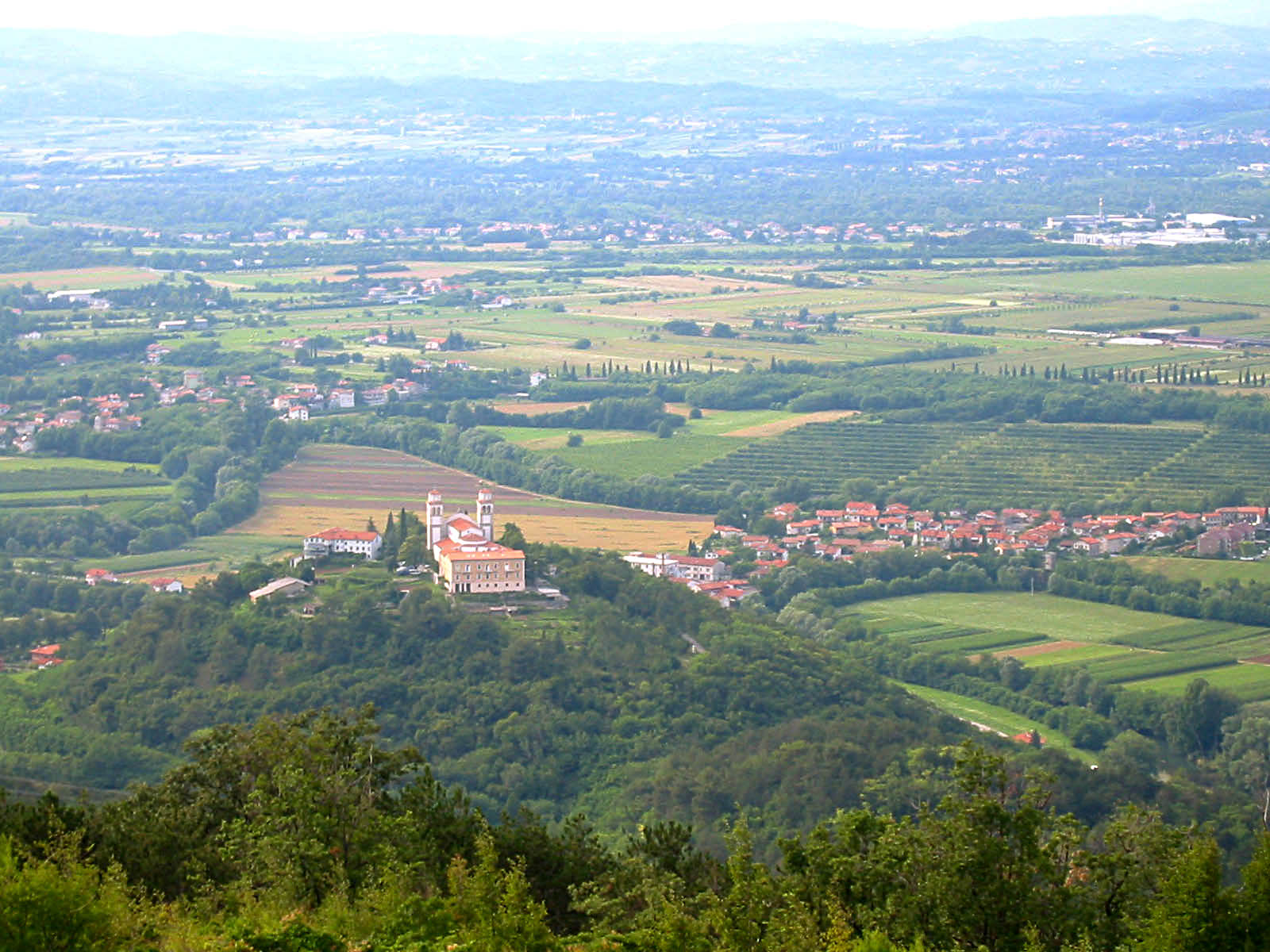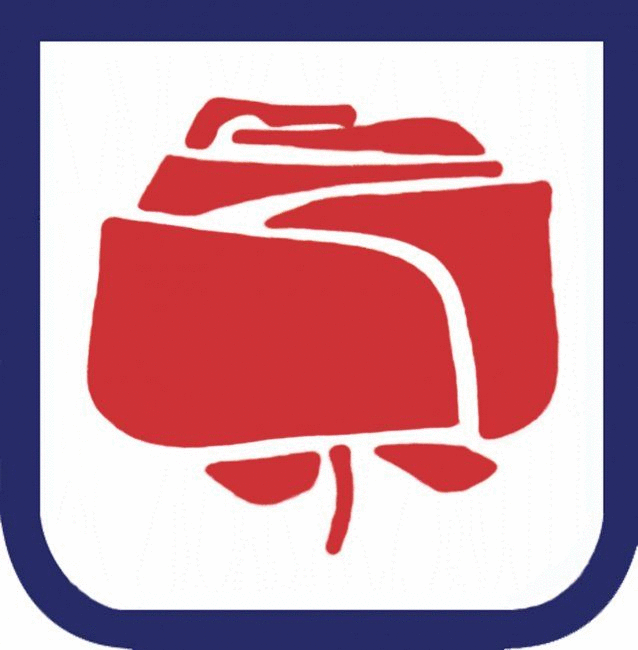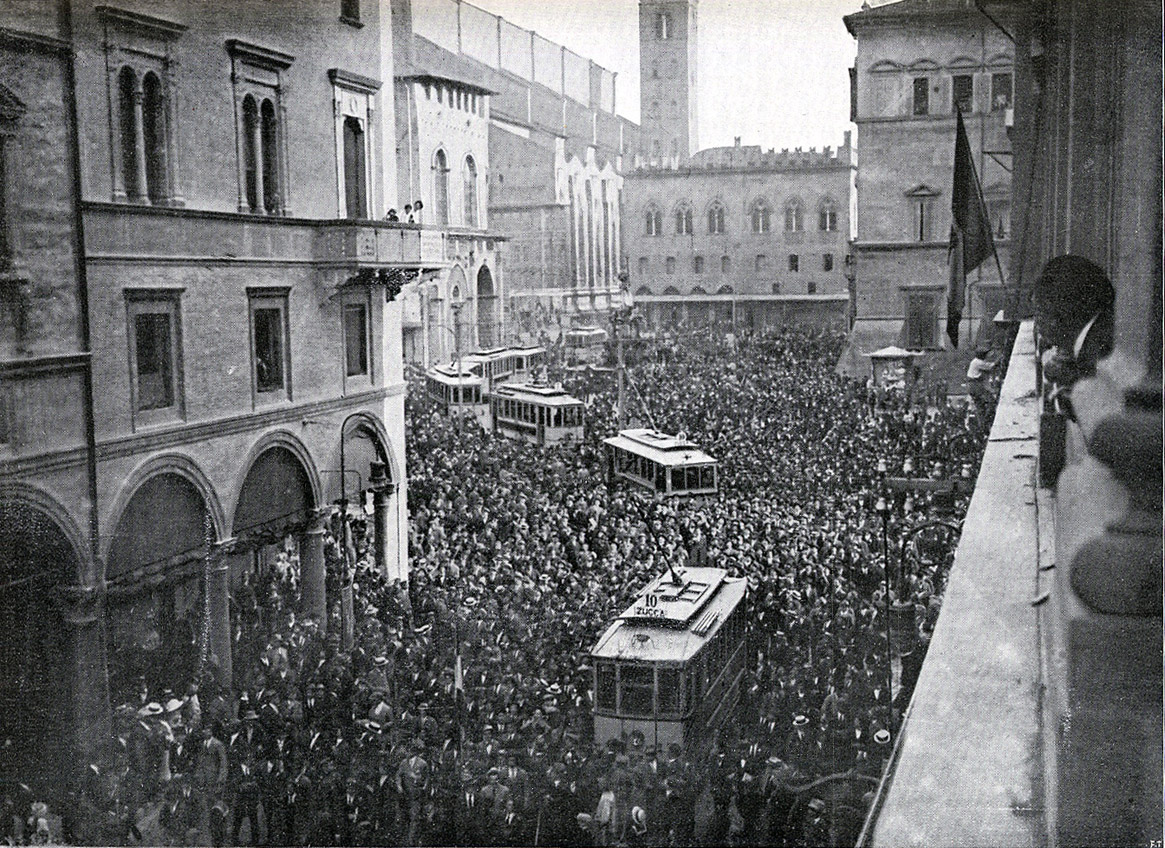|
Kobarid
Kobarid (; it, Caporetto, fur, Cjaurêt, german: Karfreit) is a settlement in Slovenia, the administrative centre of the Municipality of Kobarid. Kobarid is known for the 1917 Battle of Caporetto, where the Italian retreat was documented by Ernest Hemingway in his novel ''A Farewell to Arms''. The battle is well documented in the museum in the centre of Kobarid. The museum won a Council of Europe award in 1993. Name Kobarid was attested in written sources as ''Kauoretum'' in 1184 (and as ''de Cavoreto'' in 1258, ''Caboret'' in 1291, and ''de Chiavoretto'' in 1343). The Slovenian name is derived from ''*Koboridъ'', borrowed from Old Friulian ''*Kaborệdu''. The original Romance form of the name, ''*Cap(o)rētum'', is probably derived from Latin ''caper'' 'goat' and refers to a place where there are goats. The town is known as ''Cjaurêt'' in Friulian, ''Karfreit'' in German, and ''Caporetto'' in Italian. Geography The municipality is the westernmost in Slovenia, situated in ... [...More Info...] [...Related Items...] OR: [Wikipedia] [Google] [Baidu] |
Kobarid - Spectators At Cliff Diving Event
Kobarid (; it, Caporetto, fur, Cjaurêt, german: Karfreit) is a settlement in Slovenia, the administrative centre of the Municipality of Kobarid. Kobarid is known for the 1917 Battle of Caporetto, where the Italian retreat was documented by Ernest Hemingway in his novel ''A Farewell to Arms''. The battle is well documented in the museum in the centre of Kobarid. The museum won a Council of Europe award in 1993. Name Kobarid was attested in written sources as ''Kauoretum'' in 1184 (and as ''de Cavoreto'' in 1258, ''Caboret'' in 1291, and ''de Chiavoretto'' in 1343). The Slovenian name is derived from ''*Koboridъ'', borrowed from Old Friulian ''*Kaborệdu''. The original Romance form of the name, ''*Cap(o)rētum'', is probably derived from Latin ''caper'' 'goat' and refers to a place where there are goats. The town is known as ''Cjaurêt'' in Friulian, ''Karfreit'' in German, and ''Caporetto'' in Italian. Geography The municipality is the westernmost in Slovenia, situated in ... [...More Info...] [...Related Items...] OR: [Wikipedia] [Google] [Baidu] |
Municipality Of Kobarid
The Municipality of Kobarid (; sl, Občina Kobarid) is a municipality in the Upper Soča Valley in western Slovenia, near the Italian border. The seat of the municipality is the town of Kobarid. The municipality was established on 3 October 1994, when the former larger Municipality of Tolmin was subdivided into the municipalities of Bovec, Kobarid, and Tolmin. Settlements In addition to the municipal seat of Kobarid, the municipality also includes the following settlements: * Avsa * Borjana * Breginj * Drežnica * Drežniške Ravne * Homec * Idrsko * Jevšček * Jezerca * Koseč * Kred * Krn * Ladra * Libušnje * Livek * Livške Ravne * Logje * Magozd * Mlinsko * Perati * Podbela * Potoki * Robidišče * Robič * Sedlo * Smast * Stanovišče * Staro Selo * Sužid * Svino * Trnovo ob Soči * Vrsno History The area has been inhabited since prehistoric times. Archeological remains from the Hallstatt period have been found in the area. In the 6th cent ... [...More Info...] [...Related Items...] OR: [Wikipedia] [Google] [Baidu] |
Battle Of Caporetto
The Battle of Caporetto (also known as the Twelfth Battle of the Isonzo, the Battle of Kobarid or the Battle of Karfreit) was a battle on the Italian front of World War I. The battle was fought between the Kingdom of Italy and the Central Powers and took place from 24 October to 19 November 1917, near the town of Kobarid (now in north-western Slovenia, then part of the Austrian Littoral). The battle was named after the Italian name of the town (also known as ''Karfreit'' in German). Austro-Hungarian forces, reinforced by German units, were able to break into the Italian front line and rout the Italian forces opposing them. The battle was a demonstration of the effectiveness of the use of stormtroopers and the infiltration tactics developed in part by Oskar von Hutier. The use of poison gas by the Germans also played a key role in the collapse of the Italian Second Army. The rest of the Italian Army retreated to the Piave River, its effective strength declined fr ... [...More Info...] [...Related Items...] OR: [Wikipedia] [Google] [Baidu] |
Municipalities Of Slovenia
Slovenia is divided into 212 municipalities ( Slovene: ''občine'', singular'' občina''), of which 12 have urban (metropolitan) status. Municipalities are further divided into local communities and districts. Slovene is an official language of all the municipalities. Hungarian is a second official language of three municipalities in Prekmurje: Dobrovnik/Dobronak, Hodoš/Hodos, and Lendava/Lendva. Italian is a second official language of four municipalities (of which one has urban status) in the Slovene Littoral: Ankaran/Ancarano, Izola/Isola, Koper/Capodistria, and Piran/Pirano. In the EU statistics, the municipalities of Slovenia are classified as "local administrative unit 2" (LAU 2), below 58 administrative units ('), which are LAU 1. Names The Slovene names of the municipalities have the word ''Občina'' 'municipality' followed by a nominative In grammar, the nominative case (abbreviated ), subjective case, straight case or upright case is one of the grammatical cas ... [...More Info...] [...Related Items...] OR: [Wikipedia] [Google] [Baidu] |
Goriška
Goriška is a historical region in western Slovenia on the border with Italy. It comprises the northern part of the wider traditional region of the Slovenian Littoral (''Primorska''). The name ''Goriška'' is an adjective referring to the city of Gorizia,Merkù, Pavle. 1999. ''Slovenska krajevna imena v Italiji. Priročnik''. Trieste: Mladika, p. 33. its historical and cultural centre. Geography The region stretches from the Julian Alps (Triglav) in the north down the Soča River to Nova Gorica and the Karst Plateau in the hinterland of Trieste. It encompasses the following municipalities (from north to south): It is entirely included in the Gorizia Statistical Region, except for the southernmost municipalities of Komen and Sežana, which are part of the Coastal–Karst Statistical Region. Goriška borders on Upper Carniola in the northeast and Inner Carniola in the east. In the south, it is confined by Slovenian Istria and the Trieste city limits. Together with the adjacent ... [...More Info...] [...Related Items...] OR: [Wikipedia] [Google] [Baidu] |
Gorizia Statistical Region
The Gorizia Statistical Region ( sl, Goriška statistična regija) is a statistical region in western Slovenia, along the border with Italy. It is named after the Italian town of Gorizia (the feminine adjective ''goriška'' comes from the Slovenian name for Gorizia: ''Gorica''). The Julian Alps, the Soča River, and the Vipava Valley are the most prominent natural features of this region. It contributed just over 5% to total national GDP in 2012, but in terms of GDP per capita it ranked fourth in the country. In the same year, disposable income per capita in the region the highest, in second place behind the Central Slovenia Statistical Region. Housing stock estimates indicate that at the end of 2013 the region had the highest share of dwellings with three or more rooms (around 70%). The share of single-room dwellings was less than 10%. Dwellings here are larger than the Slovenian average, with 37 m² of usable floor space per person on average. The number of cars per 1,000 pop ... [...More Info...] [...Related Items...] OR: [Wikipedia] [Google] [Baidu] |
Italian Front (World War I)
The Italian front or Alpine front ( it, Fronte alpino, "Alpine front"; in german: Gebirgskrieg, "Mountain war") involved a series of battles at the border between Austria-Hungary and Italy, fought between 1915 and 1918 in the course of World War I. Following secret promises made by the Allies in the 1915 Treaty of London, Italy entered the war aiming to annex the Austrian Littoral, northern Dalmatia, and the territories of present-day Trentino and South Tyrol. Although Italy had hoped to gain the territories with a surprise offensive, the front soon bogged down into trench warfare, similar to that on the Western Front in France, but at high altitudes and with very cold winters. Fighting along the front displaced much of the local population, and several thousand civilians died from malnutrition and illness in Italian and Austro-Hungarian refugee-camps. The Allied victory at Vittorio Veneto, the disintegration of the Habsburg empire, and the Italian capture of Trento and ... [...More Info...] [...Related Items...] OR: [Wikipedia] [Google] [Baidu] |
Slovene Littoral
The Slovene Littoral ( sl, Primorska, ; it, Litorale; german: Küstenland) is one of the five traditional regions of Slovenia. Its name recalls the former Austrian Littoral (''Avstrijsko Primorje''), the Habsburg possessions on the upper Adriatic coast, of which the Slovene Littoral was part. Geography The region forms the westernmost part of Slovenia, bordering the intermunicipal union of Giuliana in the region of Friuli Venezia Giulia of Italy. It stretches from the Adriatic Sea in the south up to the Julian Alps in the north. The Slovene Littoral comprises two traditional provinces: Goriška and Slovene Istria. The Goriška region takes its name from the town of Gorizia () now in Italy; the neighbouring conurbation of Nova Gorica and Šempeter-Vrtojba today is the urban centre of the Slovene Littoral. Slovene Istria comprises the northern part of the Istria peninsula and provides, on the Slovene Riviera coastline with the ports of Koper, Izola, and Piran, the country ... [...More Info...] [...Related Items...] OR: [Wikipedia] [Google] [Baidu] |
Pulfero
Pulfero ( sl, Podbonesec; fur, Pulfar) is a ''comune'' (municipality) in the Province of Udine in the Italian region Friuli-Venezia Giulia (man), it, Friulana (woman), it, Giuliano (man), it, Giuliana (woman) , population_note = , population_blank1_title = , population_blank1 = , demographics_type1 = , demographics1_footnotes = , demographics1_t ..., located about northwest of Trieste and about northeast of Udine, on the border with Slovenia, and borders the following municipalities: Faedis, Kobarid (Slovenia), San Pietro al Natisone, Savogna, and Torreano. Pulfero localities ( Frazioni) include: Municipal statute. Antro/''Landar'', Biacis/''Bijača'', Brischis/''Brišča'', Calla/''Kau'', Cicigolis/''Ščigla'', Co ... [...More Info...] [...Related Items...] OR: [Wikipedia] [Google] [Baidu] |
Slovenian Littoral
The Slovene Littoral ( sl, Primorska, ; it, Litorale; german: Küstenland) is one of the five traditional regions of Slovenia. Its name recalls the former Austrian Littoral (''Avstrijsko Primorje''), the Habsburg possessions on the upper Adriatic coast, of which the Slovene Littoral was part. Geography The region forms the westernmost part of Slovenia, bordering the intermunicipal union of Giuliana in the region of Friuli Venezia Giulia of Italy. It stretches from the Adriatic Sea in the south up to the Julian Alps in the north. The Slovene Littoral comprises two traditional provinces: Goriška and Slovene Istria. The Goriška region takes its name from the town of Gorizia () now in Italy; the neighbouring conurbation of Nova Gorica and Šempeter-Vrtojba today is the urban centre of the Slovene Littoral. Slovene Istria comprises the northern part of the Istria peninsula and provides, on the Slovene Riviera coastline with the ports of Koper, Izola, and Piran, the coun ... [...More Info...] [...Related Items...] OR: [Wikipedia] [Google] [Baidu] |
Soča
The Soča ( in Slovene) or Isonzo ( in Italian; other names fur, Lusinç, german: Sontig, la, Aesontius or ') is a long river that flows through western Slovenia () and northeastern Italy (). An Alpine river in character, its source lies in the Trenta Valley in the Julian Alps in northwestern Slovenia, at an elevation of . The river runs past the towns of Bovec, Kobarid, Tolmin, Kanal ob Soči, Nova Gorica (where it is crossed by the Solkan Bridge), and Gorizia, entering the Adriatic Sea close to the town of Monfalcone. It has a nival-pluvial regime in its upper course and pluvial-nival in its lower course. Prior to the First World War, the river ran parallel to the border between Kingdom of Italy and the Austro-Hungarian Empire. During World War I, it was the scene of bitter fighting between the two countries, culminating in the Battle of Caporetto in 1917. Name The river was recorded in antiquity as ''Aesontius'', ''Sontius'', and ''Isontius''. Later attestations ... [...More Info...] [...Related Items...] OR: [Wikipedia] [Google] [Baidu] |
Roman Empire
The Roman Empire ( la, Imperium Romanum ; grc-gre, Βασιλεία τῶν Ῥωμαίων, Basileía tôn Rhōmaíōn) was the post- Republican period of ancient Rome. As a polity, it included large territorial holdings around the Mediterranean Sea in Europe, North Africa, and Western Asia, and was ruled by emperors. From the accession of Caesar Augustus as the first Roman emperor to the military anarchy of the 3rd century, it was a Principate with Italia as the metropole of its provinces and the city of Rome as its sole capital. The Empire was later ruled by multiple emperors who shared control over the Western Roman Empire and the Eastern Roman Empire. The city of Rome remained the nominal capital of both parts until AD 476 when the imperial insignia were sent to Constantinople following the capture of the Western capital of Ravenna by the Germanic barbarians. The adoption of Christianity as the state church of the Roman Empire in AD 380 and the fall of th ... [...More Info...] [...Related Items...] OR: [Wikipedia] [Google] [Baidu] |









